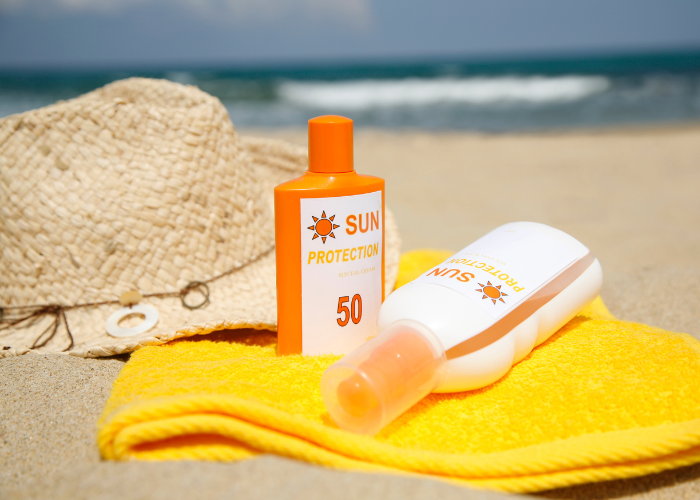IMANA NEWS
Why is July Observed as UV Safety Month?
14 July 2025

July brings heat, fireworks, and long days under the sun. It’s also a month associated with a major risk: sun exposure. This July, as thousands of Americans observe UV Safety Month, let’s understand why it’s a momentous occasion, especially for skin cancer awareness.
Why Do We Have a UV Safety Month?
Sun rays may seem harmless on paper. But from a medical perspective, they pose a major threat. This is because of the presence of invisible UV radiation. To be even more specific, it boils down to one particular type of UV radiation — Ultraviolet A.
Unlike UV-B rays, which cause surface-level sunburns, these waves penetrate deep into the skin. They contribute to a host of conditions as a result. UV-A rays are what cause deep lines, wrinkles, and other signs of premature aging. They also harm the eyes, increasing the risk of cataracts and macular degeneration.
Worst of all, this form of UV exposure causes skin cancer, which impacts a staggering number of Americans every year.
The Skin Cancer Foundation says up to 9,500 people are diagnosed with one form of the deadly disease every day. Other accounts say up to one in five Americans will be diagnosed with it in their lifetimes.
Statistics are dire, but rarely get the attention they deserve.
That’s why the UV safety month was established by the U.S. Department of Health and Human Services, and is a mission endorsed by the country’s leading health organizations and medical professionals, including IMANA.
What Can You Do This UV Safety Month?
The simplest advice that every American can follow is to apply a broad-spectrum sunscreen to exposed parts of their body. An SPF 30 sunscreen or above should be sufficient to block out most harmful rays. It should be reapplied every 2 hours in normal circumstances, but more frequently when swimming or excessively sweating.
This practice can be supplemented with other good habits too. For instance:
- Wear (the right kind of) sunglasses to keep your eyes safe
- Seek shelter when the sun is brightest — usually from 10 am to 4 pm
- Wear protective clothing, including long sleeves, hats, etc
- Don’t ignore these measures on cloudy days. They can be just as harmful
Remember that skin conditions are cumulative in nature. A couple of aggressive burns in your youth significantly increase the risk of deadly diseases later in life.
Skin Cancer Safety and Protection Tips
The early signs of all kinds of cancers can be detected during regular screenings. But skin cancers are even easier to discover — considering the signs start to show on the surface. When found early enough, the survival rate jumps to 99%.
Still, awareness is sorely lacking — a fact that reflects in the stats. In January this year, it was estimated that over 8,000 people will lose their lives to skin cancer in 2025. This UV safety month, the best thing you can do is to learn more about the dangers.
Starting with the three most common kinds of skin cancers:
- Basal cell carcinoma is the most common. But it also rarely spreads and can be effectively treated with surgery or radiation when detected early.
- Squamous cell carcinoma is the second most common. On its own, it’s not usually life-threatening. But it is also known to spread quickly and cause a series of very serious complications.
- Melanoma is rarer, but more serious than the previous two. It usually starts out as a mole that quickly changes in size and shape. It’s curable when caught early, but has a tendency to spread very quickly.
There are other, rarer forms but most UV-related cases fall into these three main categories. And all three are directly linked to sun exposure over time.
How to Identify Signs Skin Cancer
Across all categories of skin cancer, one thing is clear: early detection saves lives. But for the layman, spotting the warning signs isn’t always easy. Skin changes can be subtle. A dangerous mole doesn’t always look dramatic.
The VA offers some guidelines to help you identify potential melanomas and other suspicious spots. If you’re looking at a mole or patch of skin and something feels off, here’s what matters:
- Look at the shape. Harmless moles are symmetrical, i.e. both halves look the same. When one side looks different from the other, that’s a red flag.
- Check the borders. Irregular and jagged edges, or blurred boundaries can all be signs of abnormal growth.
- Identify the color. If it’s even and in one shade, you should be fine. If you’re seeing multiple shades of red or dark brown, it needs closer inspection.
- Size is another factor. Moles larger than about a fourth of an inch need attention.
The biggest warning sign is change. If a mole starts growing, changing shades, or forming new shapes, it’s time for a professional opinion.
Attend a Health Screening this July
UV safety month isn’t just about raising awareness, it’s about actively fighting the risks of radiation.
From the Fourth of July onwards, clinics and hospitals across the country will conduct regular screenings. Many of them will be free. The American Academy of Dermatology has a map to help you find the closest to you.
There’s no better time for a checkup. Screenings are usually very quick and highly effective at spotting early signs. If you can’t attend one, you’ll find several expert opinions, early-warning sign charts and mole mapping tools online.
This UV safety month, don’t forget a single small action today can have a massive impact on tomorrow. That’s what we believe at IMANA at least. For years, our volunteers have provided medical relief to sensitive groups around the world.
Help us in our mission to make the world a healthier place.